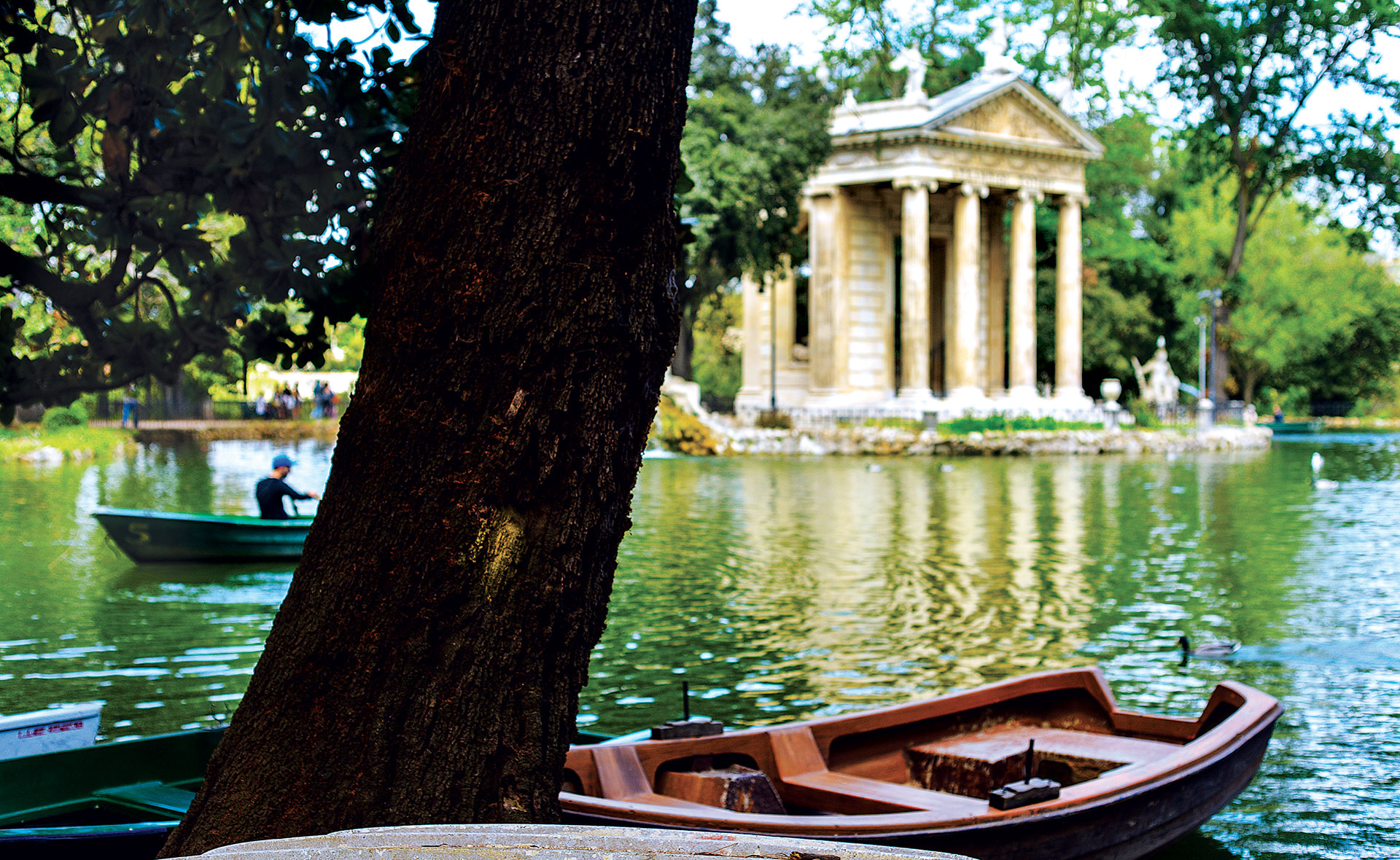A truly unique park, with a characteristic heart-shaped layout, where you can enjoy the beauty of a luxuriant natural setting and countless other attractions.

Covering an area of 80 hectares, Villa Borghese, with its 9 different entrances, is the fourth largest park in Rome.
The villa started life as a small vineyard belonging to the Borghese family before undergoing a transformation into a “Villa delle Delizie” (“Villa of Delights”), starting in 1607, on the wishes of Cardinal Scipione Borghese.
In order to realize this ambitious project, the Cardinal, a refined patron of the arts, purchased plots adjoining the estate and entrusted the work to the architect Flaminio Ponzio, who was succeeded by the Dutch architect and garden designer Giovanni Vasanzio (Jan van Santen).
In 1766 Prince Marcantonio IV Borghese enriched the villa with sumptuous decorations, designed and completed by the architect Antonio Asprucci.
Ascending the ramps of the Pincio from Piazza del Popolo brings the visitor to a splendid French garden, where breath-taking views of Rome may be enjoyed from the belvedere of Piazza Napoleone. Not far away is Casina Valadier, an elegant nineteenth-century villa where it is possible to stop for a business lunch or an exclusive romantic dinner.
Proceeding in the direction of the Pinciano Obelisk, dating from the time of the Emperor Hadrian, the visitor reaches the magical Water Clock, a true masterpiece of engineering, built to a project by Giovanni Battista Embriaco in 1873.
Crossing the Muro Torto, to the right is the riding track, where the Casino di Raffaello, which took its name from the frescoes painted by the artist from Urbino (now housed in Galleria Borghese), stood until it was destroyed during a bombardment by the French army in 1849. A walk through the avenues and lawns leads to the Orangery, now home to the Carlo Bilotti Museum, where works by artists such as de Chirico, Warhol, Severini and Manzù are preserved.
Not far away is the Giardino del Lago (Lake Garden), with its small lake and artificial island housing the Tempio di Esculapio or Temple of Aesculapius, god of medicine. Visitors may rent small boats in order to admire this small, neoclassical temple from close up.
Further on, the visitor encounters a small corner of England, the Globe Theatre, a faithful reproduction of the Elizabethan London theatre of the same name, followed by a replica of Piazza di Siena, home of the well-known equestrian competition. Passing the Fountain of Marine Horses, the visitor reaches the Casina delle Rose, which has played host to the Casa del Cinema since 2002.
Continuing along Via del Museo Borghese the visitor comes to the Casino Nobile, better known as the Galleria Borghese. Cardinal Scipione Borghese built this gorgeous building, surrounded by three secret gardens, to host his art collection, one of the most beautiful in the world. It houses such works as Bernini’s “Apollo and Daphne”, Raphael’s “Young Woman with Unicorn”, and Titian’s “Sacred and Profane Love”. Of particular interest, located close to the Gallery, is a delightful garden with the Fountain of Venus at the centre, and the Uccelliera pavilion, a large aviary that once hosted rare and exotic birds.
